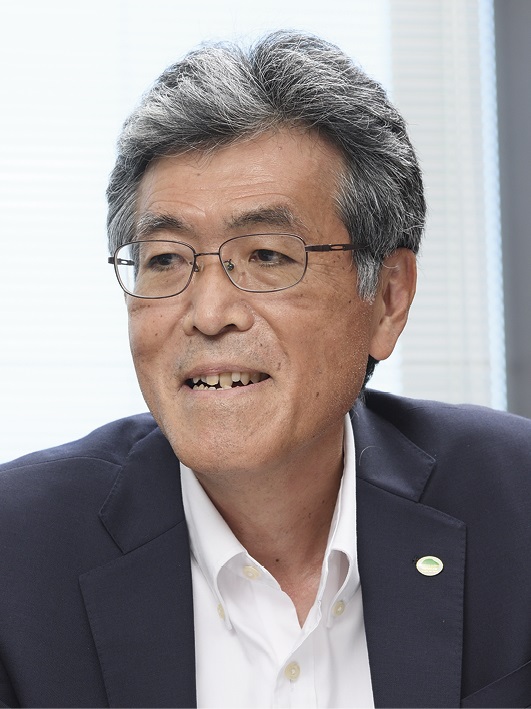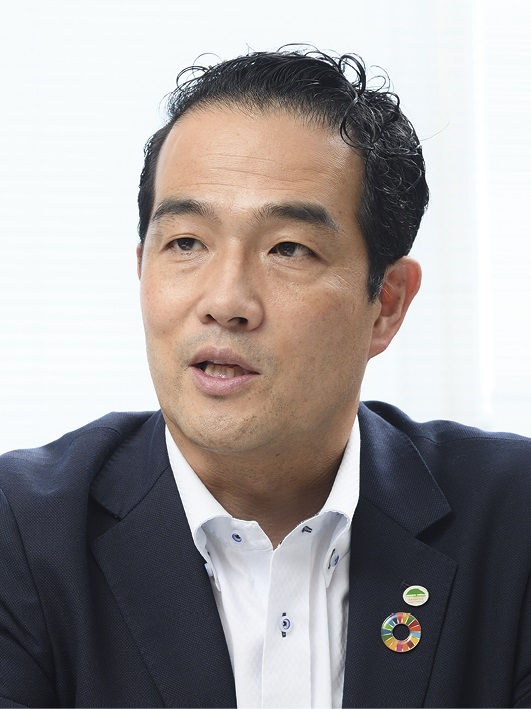
Drawing on Power of Technology to Overcome Challenges Facing EVs on Road to Carbon Neutrality
So, what specific actions are being taken to achieve sustainable mobility? Toshiharu Nogi, General Manager of Advanced Mobility Development Unit, Technology Development Functional Division, Hitachi Astemo, Ltd., comments as follows on the increasing pace of vehicle electrification in pursuit of carbon-free and carbon-neural objectives. “Electric motors are one critical component, and this is a field where Hitachi has more than 100 years of experience and accumulated expertise going back to the 5-hp motor that was the company’s first-ever product.
As we also have more than 50 years of product experience with automotive electric motors and inverters since the 1970s and electrification represents a major opportunity for us. Key factors are high output density to reduce the size and weight, and scalability. For high output density, we are drawing on Hitachi’s accumulated expertise in electromagnets, structural design, vibration analysis, and simulation to achieve development efficiency. We are also utilizing model-based design technology to optimize small and lightweight e-Axle powertrains that combine an electric motor, inverter, and gearbox. Another strength of Hitachi is how we were able to make a smaller and lighter e-Axle by developing proprietary technology for double-sided cooling of the inverter.”


Shiro Yamaoka, General Manager, the Center for Technology Innovation – Electrification, Research & Development Group, Hitachi, Ltd., adds further detail.
“In terms of scalability, Hitachi is continuing to undertake research and development (R&D) into the key factors influencing competitiveness in motor inverter development, namely miniaturization and loss reduction, also using things like power module technologies with low switching losses that allow for double-sided cooling. The Research & Development Group, meanwhile, is looking further ahead as it seeks to address societal challenges, developing technology for grid interconnection that considers how to reduce the load on the environment and how to go about using and redistributing electric power.”
Uniting the world to tackle climate change. Hitachi is proud to be a Principal Partner for the UN COP26 conference in Glasgow this year, as world leaders gather to commit to climate action.
Shuichiro Miura, General Manager, Connected Car Division, Smart Digital Solution Business Development Division, Smart Life Business Management Division, Hitachi, Ltd., provides the following explanation of the work being done on e-mobility operator services, meaning services that encourage the wider adoption of electric vehicles (EVs).
“We are looking at offering services that address the difficulties that logistics businesses and other mobility operators face when shifting to EVs, and in terms of technology we are pushing ahead with the provision of three such solutions. The first solution relates to batteries and seeks to overcome these problems through battery lifecycle management, encompassing the monitoring of batteries, assessing their remaining life, and redeploying them for stationary power storage. Maintenance is another important consideration. As EVs are different from internal combustion engine (ICE) vehicles in that they can be put out of service by traffic accidents, we offer maintenance services based on EV availability. Finally, we are looking at providing services aimed at overcoming the limitations of vehicle range, such as tracking vehicle movements and advising on better routes.”
Uniting the world to tackle climate change. Hitachi is proud to be a Principal Partner for the UN COP26 conference in Glasgow this year, as world leaders gather to commit to climate action.

Join us at Hitachi Astemo!